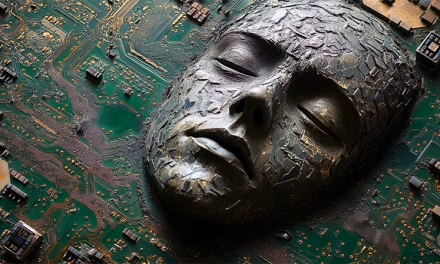
Imagine a camera you don’t need to focus. You can focus on anyplace in your picture you like after you take it! Lensless cameras are here.
A team at the Tokyo Institute of Technology has come up with a way to take the blur captured when you use an image sensor without a lens and turn it into a clear image, potentially opening the path to ultra-compact cameras as well as offering 3D and new focusing capabilities.
“Without the limitations of a lens,” explains Masahiro Yamaguchi, professor at Tokyo Tech and co-author of the paper to Phys, revealing the team’s work: “the lensless camera could be ultra-miniature, which could allow new applications that are beyond our imagination.”
Typically, an image sensor works behind a lens: light is captured and focused on the sensor, which can then provide a pixel-by-pixel image to the connected system. Yamaguchi and colleagues, however, are using the sensor behind a thin mask — an approach that usually produces nothing more than a colorful blob.
That blob, the researchers have found, has enough information in it to recreate the original image like as if a lens had been in place. They’re not the first to attempt this. Previous work is based on neural networks, with mixed results. The Tokyo team, however, has added a vision transformer (ViT) creating far clearer images than previous approaches and in a fraction of the time, allowing for real-time image capture and processing. They are teaching the computer to look at features on several levels, from local to the whole image.
“We realize that miniaturization should not be the only advantage of the lens-less camera,” says lead author Xiuxi Pan, of the potential for the team’s work. “The lens-less camera can be applied to invisible light imaging, in which the use of a lens is impractical or even impossible.
“In addition, the underlying dimensionality of captured optical information by the lens-less camera is greater than two, which makes one-shot 3D imaging and post-capture refocusing possible. We are exploring more features of the lens-less camera. The ultimate goal of a lens-less camera is being miniature-yet-mighty. We are excited to be leading in this new direction for next-generation imaging and sensing solutions.”
A more detailed article can be found here at Digital Photography Review.
The team’s work has been published under closed access terms in the journal Optics Letters. This suggests that the team wants to control access to what may someday be proprietary software.

In Singapore, researchers developed a camera that can take a spectrogram and make an image, all without a lens.

Another concept is a metalens. In a traditional lens, the glass varies in thickness between the middle and edges. This focuses the light at one specific point beyond the lens. A metalens also bends the light toward the focal point, matching what happens in the glass lens, but with much less material. A metalens only 600 nanometer long can achieve the same resolution and magnification as a lens with a focal length of 3 inches.
To put this in perspective, the wall of a soap bubble can be anywhere from 10 nanometers to 1000 nanometers, putting a metalens squarely in soap bubble territory. The refraction of light as it passes through the varying thickness of the bubble’s walls is what creates their rainbow appearance.
Combining this new lens technology with robots that can go places humans can’t may yield future imaging technology that achieves things that seem impossible today.
The future is coming sooner than we think.
-30-
![]()
David Raiklen wrote, directed and scored his first film at age 9. He began studying keyboard and composing at age 5. He attended, then taught at UCLA, USC and CalArts. Among his teachers are John Williams and Mel Powel.
He has worked for Fox, Disney and Sprint. David has received numerous awards for his work, including the 2004 American Music Center Award. Dr. Raiklen has composed music and sound design for theater (Death and the Maiden), dance (Russian Ballet), television (Sing Me a Story), cell phone (Spacey Movie), museums (Museum of Tolerance), concert (Violin Sonata ), and film (Appalachian Trail).
His compositions have been performed at the Hollywood Bowl and the first Disney Hall. David Raiken is also host of a successful radio program, Classical Fan Club.













You must be logged in to post a comment.